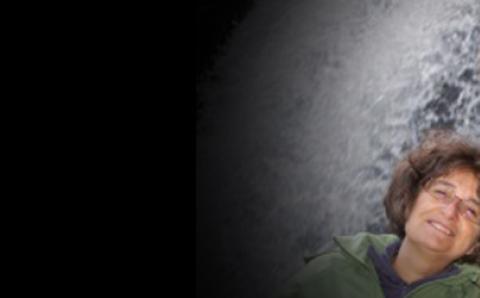I recently attended an all-day meeting in Bellevue, Wash., convened by the Christian Reformed Church’s Strategic Planning and Adaptive Change Team (SPACT).
In the morning the team met with members of Seattle-area churches, going over the specifics of their report detailing the challenges and opportunities facing the CRC.
In the afternoon, team members met with church planters. Listening in, I wondered what it takes to start a new church in a place like Seattle, which is not exactly known as a city of churches. After the meeting, I asked one of the church planters, Rev. Randy Rowland, if we could talk.
He invited me to join him at the Green Bean Coffee House, a ministry of his church, where he would be officiating later that evening at a memorial service.
As I stood outside the coffee shop that evening, friends and family of the man being eulogized started filing in.
With everything in place and several minutes to go before the service, Rowland took me next door to a pizza place.
Rowland, a former radio disc jockey, told me that he had worked for many years as a church planter in the Presbyterian Church (USA) and now with the CRC.
Serving on the front lines of church growth, he has learned firsthand what it takes to begin new congregations, which he calls the lifeblood of any denomination.
A church planter must be flexible and find creative ways to gather a core group of people who can live out the gospel message in a local context, Rowland said.
He has tried to do this with Sanctuary, formally organized in 2007, seeking to weave it into the life of its Greenwood neighborhood.
One part of their ministry is the Green Bean. It is a money maker, serving coffee to customers as well as hosting gatherings such as the memorial service.
Sanctuary meets for services in the Taproot Theatre, a local venue with a national reputation for fostering the arts.
Every Sunday, about 100 people, many in their 20s and 30s, attend the service. Some 800 or so people have come through the church over the years. Hopefully, said Rowland, they’ve moved on to other churches.
On the same Saturday morning I met with Rowland, Sanctuary had invited members to take a morning stroll through their neighborhood—a good way to familiarize people with the surroundings as well as help them get to know each other, forming bonds the church can nurture.
“Our goal is to build community—and I mean this whole community and all of the people in it,” said Rowland, waving a hand at people passing on the crowded sidewalk.
Church members say they are drawn to Sanctuary because it is an urban church “with a “vibrant mission, strong leaders, and a coherent Reformed vision.”
Heather Whitney has been attending Sanctuary with her family for several years. “We were drawn to Sanctuary because of the community of people we found here.”
Alyssa Groenwold said feeling loved is important, but so is the fact that Sanctuary works, as Rowland said, “to have a presence in the community.”
Creating community, said Rowland, is having a tolerant, open-minded approach that fosters ministry to all people in the area.
A significant portion of the population to whom they minister, said Rowland, are the “nones”—young people without a church. Seattle has one of the largest population of “nones” in the U.S.
This has meant gearing messages and ministry to the needs of Seattle’s young, often highly educated, exceptionally mobile, electronically sophisticated, and skeptical population.
“We have to be constantly asking, ‘How do we make serious contact with the next generation?’ We want to be hospitable,” said Rowland, adding that he appreciated the parts of the SPACT report that deal with this topic and the challenges it presents.
“As a denomination, we need to be humble and back off, realizing that new churches tend to come in and have higher neighborhood impact,” he said.
Another issue is structure. “I would like us to be lean and mean, where churches and agencies work together,” he said.
It was nearly 7 p.m. and people had assembled for the service next door.
Rowland got up, checked his phone for messages, and went into the Green Bean. He was ready to pray a psalm and speak, he said, about “a man we loved and who just kept going back time and again to drinking.”
Related articles:
SPACT Webinars Scheduled
“Did You Know?” – Data from the SPACT Scan
CRC Seeks to Address Massive Change
A Seattle Coffeehouse Where People Listen
The Green Bean Sprouts Again
About the Author
Chris Meehan is a freelance writer and commissioned pastor at Coit Community Church in Grand Rapids, Mich.









